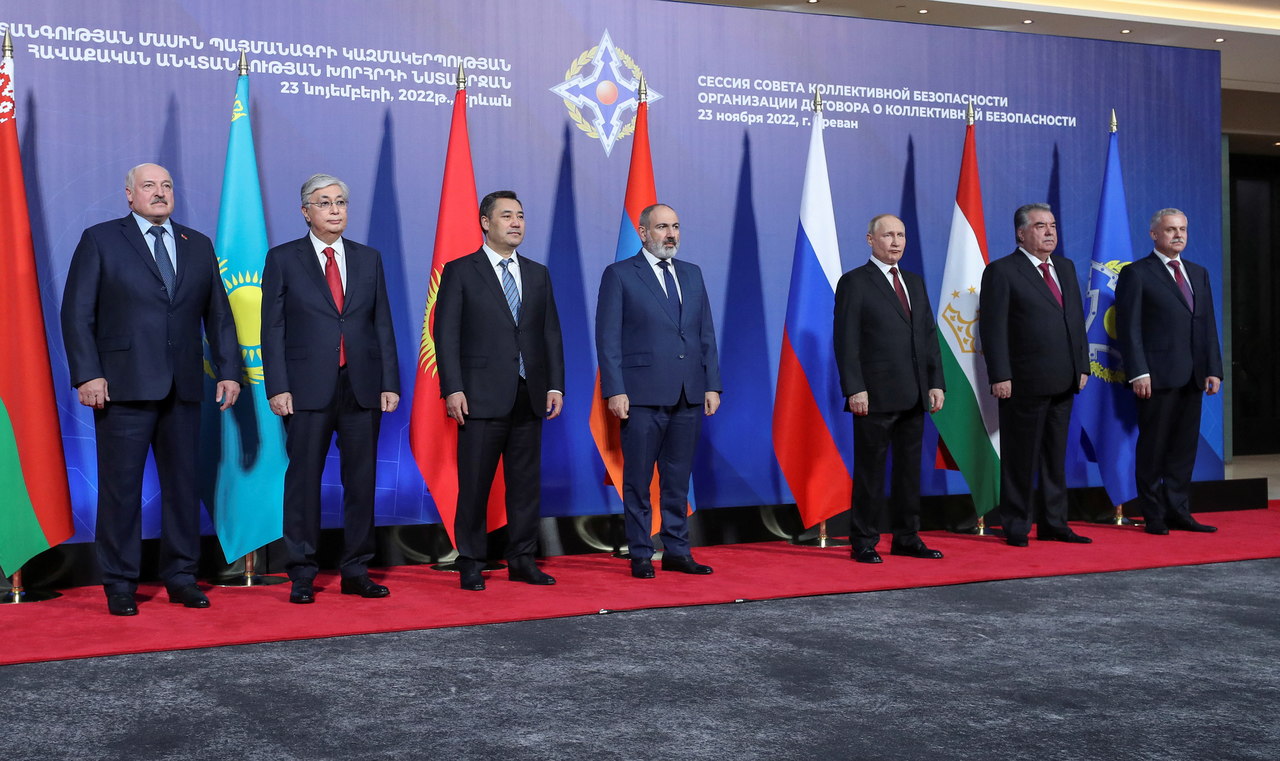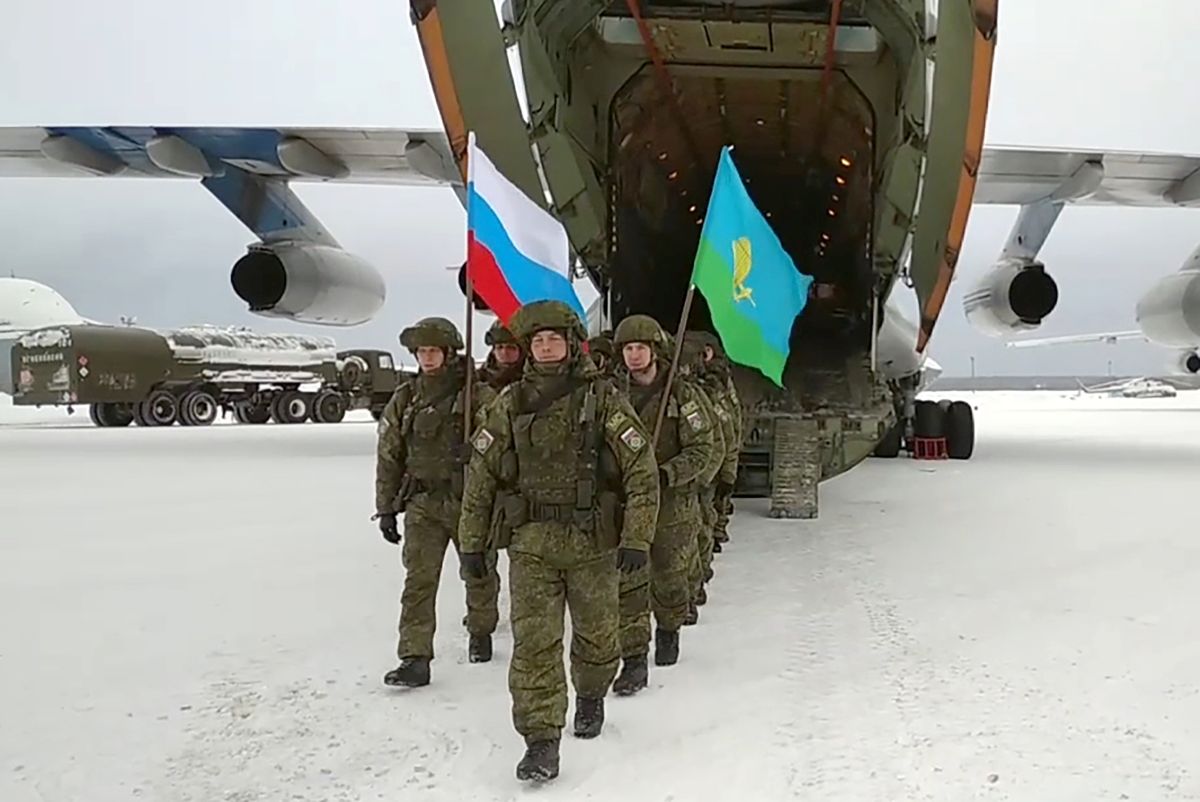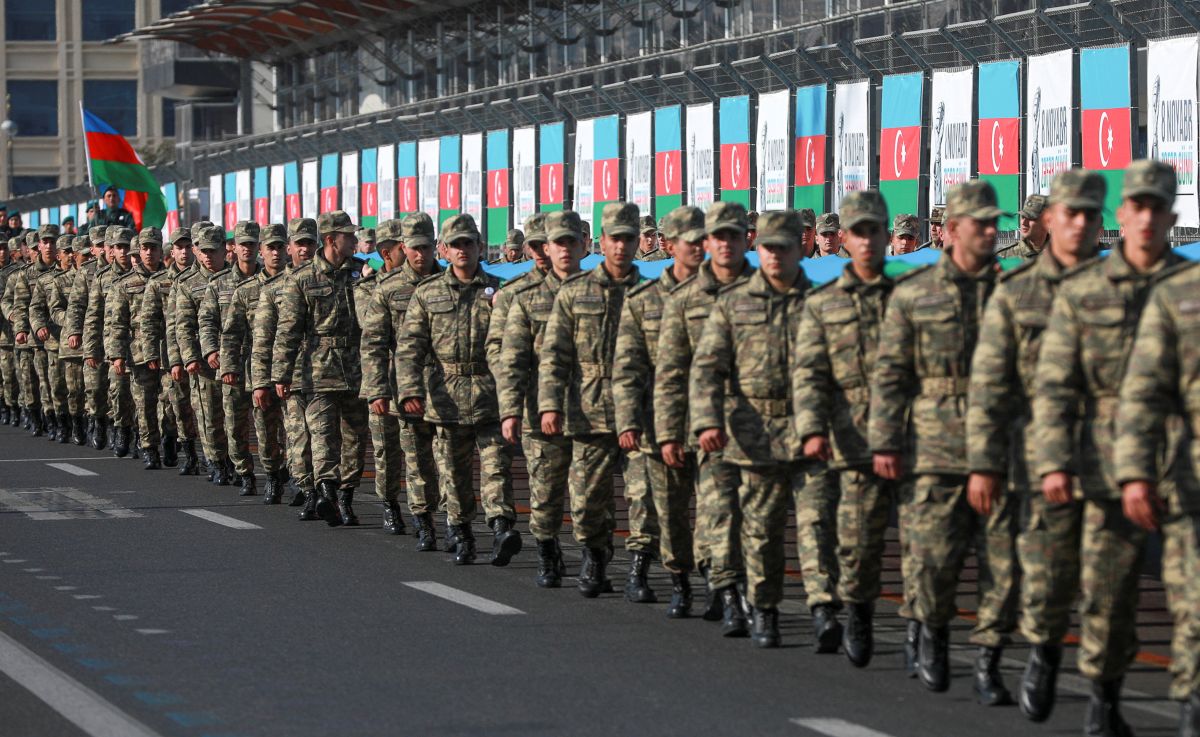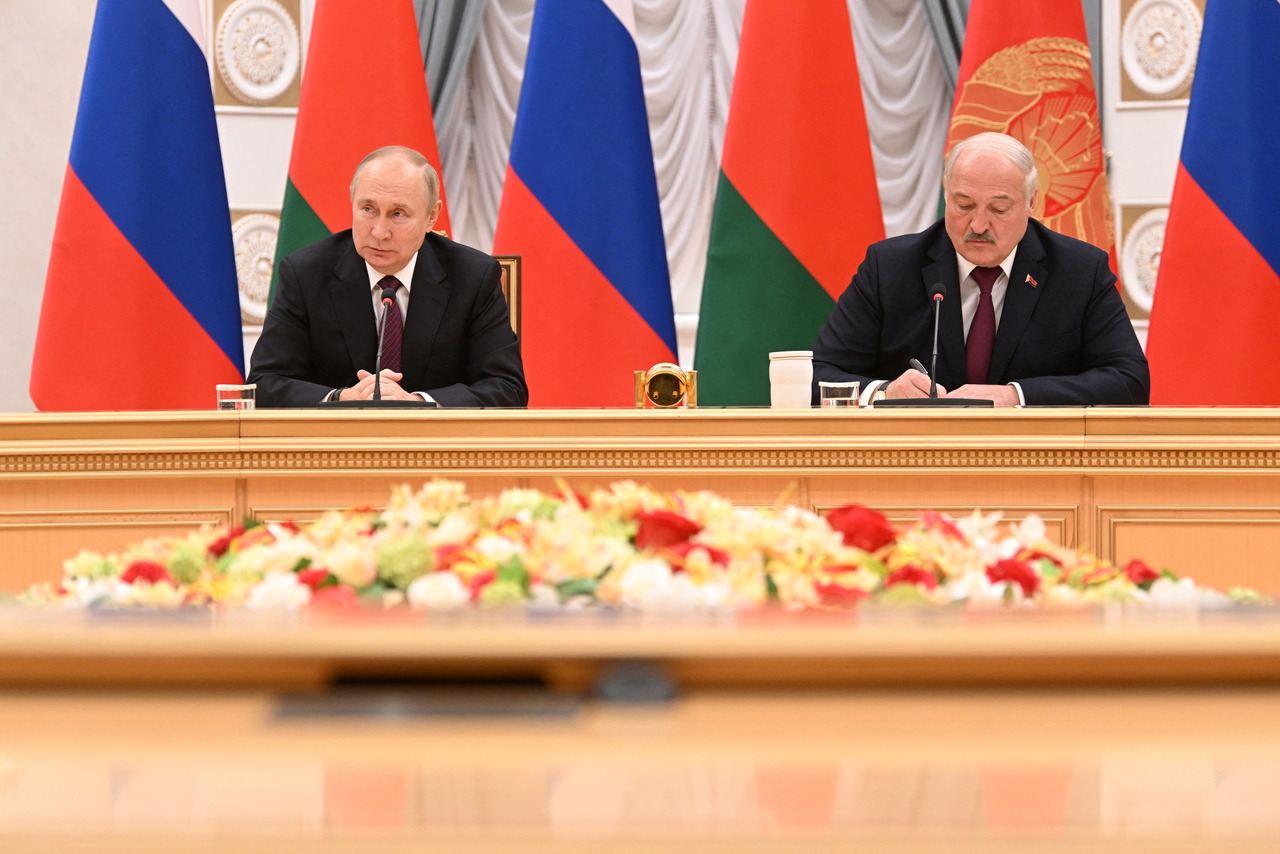CSTO Ambiguous on War in Ukraine and Faces Regional Challenges
The prolonged war in Ukraine, as well as the political and military costs for Russia connected with it, will weaken the Collective Security Treaty Organisation (CSTO). In turn, the Armenian-Azerbaijani war and Tajikistan-Kyrgyzstan disputes revealed a lack of political coherence within the organisation. The CSTO’s decreasing role may prompt the states of Central Asia and the South Caucasus to look for other military partners, such as China and Türkiye. However, it also creates opportunities for closer cooperation with EU countries and the U.S.
 PHOTOLURE / Reuters / Forum
PHOTOLURE / Reuters / Forum
CSTO Positions on the Ukraine War
Russia’s aggression against Ukraine not only failed to consolidate the members of the CSTO but also revealed the member states’ different interests. The CSTO as an organisation did not issue a joint statement on the so-called “military operation”, nor did it offer military assistance to Russia, officially because Russia did not ask for it. If this were to take place within the framework of Article 4 of the collective security treaty, which assumes a joint reaction in the event of an attack on one of the allies, it would force the CSTO members to declare whether they recognise Russia’s annexation of Ukrainian territory, including Crimea (so far, no member has done this).
Among the CSTO states, only Belarus openly supports Russia politically and militarily (provision of territory, training of soldiers, supplies of ammunition and armaments). Other countries have mostly distanced themselves from the war. In July 2022, Kazakhstan President Kassym-Jomart Tokayev refused to recognise the independence of the so-called “People’s Republics” in Donbas. Moreover, Kazakhstan denied that it is transferring arms to Russia. Kyrgyzstan’s president, Sadyr Japarov, said that the country would remain neutral in the conflict. Tajikistan and Armenia also do not openly support Russia. In the UN General Assembly, in votes critical of Russia, the CSTO members most often abstain or do not participate. For them, open support for Russia could mean a loss of aid (financial, military and humanitarian) and investments from Western states, which in future will become increasingly important as Russia’s capabilities in this area weaken due to the prolonged war in Ukraine. At the same time, however, the CSTO countries agreed that this year’s series of key military exercises—Interaction, Echelon, and Search—will take place on the territory of Belarus, which will further increase tensions in the region.
The war in Ukraine is not the first time that members of the CSTO have held different positions on Russian military activities. The first signs of a divide with Russia in the CSTO were visible after the war in Georgia in 2008 when none of the CSTO members supported Russia in its proposals to establish a new European security architecture. However, the nature of that conflict (shorter duration, fewer forces involved) did not threaten the long-term coherence of the CSTO.
Tensions within CSTO
In addition to the organisation’s approach to the war in Ukraine, CSTO coherence is also challenged by the Armenian-Azerbaijani dispute over Nagorno-Karabakh and the border tensions between Tajikistan and Kyrgyzstan. Due to the subsequent escalation of the Nagorno-Karabakh conflict in 2022 and military operations carried out by Azerbaijan on the territory of Armenia on 14 September 2022, the Armenian authorities asked the CSTO for support. In response, the organisation only sent a special observation mission to Armenia, and after it completed its mission, the organisation only expressed concern and called on both sides to refrain from escalation. Although Armenia indicated it wanted increased diplomatic pressure on Azerbaijan and a halt to arms sales, some CSTO members, such as Kazakhstan and Belarus, responded that they would not engage in actions against Azerbaijan. As a result, Armenia withdrew from participating in the CSTO exercises in Kazakhstan in 2022 and from signing the final document after the organisation’s summit in November of that year. The crisis in Armenia’s relations with the CSTO has continued, with it refusing to conduct exercises on its territory. Armenia also has not filled the post of Deputy Secretary General, which it has the right to do.
In turn, the border disputes between Tajikistan and Kyrgyzstan have exacerbated the tense security situation in Central Asia. The CSTO offered to mediate between the two countries and to send peacekeepers to the border area. Talks on this matter have been ongoing since autumn 2022 when there was another escalation (in September) that resulted in the deaths of more than 100 people, but so far they have not yielded results.
The lack of clear and firm actions by the CSTO in both cases indicates weak inertia, especially when Russia does not have the will or ability to intervene and end the conflicts.
CSTO States’ Dependence on Russia
The key role of Russia in the functioning of the CSTO was demonstrated by its intervention in Kazakhstan in 2022. Although relatively small scale (number of forces deployed, short duration), it confirmed that for an operation carried out under the aegis of the CSTO to be effective, Russia must handle the most important elements (logistics, command). The CSTO is also unable to conduct key exercises of its rapid-reaction forces (KSOR) without Russian participation; also, Russia is the largest supplier of armaments to CSTO members.
So far, Russia has used this dependence to shape the security system in its neighbourhood and regain some of the influence lost after the collapse of the USSR. What is more, the authorities of most CSTO member states saw no alternative to this alliance and treated it as an important instrument for strengthening their security, both in terms of anti-terrorist protection and possible support against riots. The events of 2022, however, have highlighted Russia’s inability to maintain a high degree of involvement in Central Asia and the South Caucasus while involved in the war in Ukraine. Given the persistence of potential threat factors, such as radical Islamic movements, this will weaken the CSTO members’ sense of security.
Conclusions and Perspectives
The invasion of Ukraine has reduced Russia’s ability to respond to crises in its southern and eastern neighbourhoods. It also has hampered its potential involvement in large-scale CSTO operations. This may lead to the CSTO becoming completely marginalised in the coming years as an organisation that can no longer ensure the safety of its members. The declining importance of the organisation, together with Russia’s prolonged involvement in Ukraine, will result in additional changes in the security system in the post-Soviet area. Some CSTO members are likely willing to seek military support from other countries, especially China and Türkiye, and to some extent from the U.S. Tajikistan is primarily interested in receiving military aid, mainly due to the difficulties in securing the border with Afghanistan, while Kazakhstan will try to build an independent position in the region.
The weakening of the CSTO will also mean a reduction in the likelihood of its forces being used in the event of conflicts between its member states. The lack of cooperation of even individual CSTO states, both in terms of information exchange and drills, may lead to a greater terrorist threat in the organisation’s area of responsibility, and also in Europe. Therefore, EU members could offer the Central Asian CSTO states increased cooperation in the fight against terrorism. The EU can continue to support mediation between Armenia and Azerbaijan, which should help stabilise the situation in the South Caucasus.
In turn, the U.S., as part of developing cooperation in the C5+1 format (Kazakhstan, Kyrgyzstan, Tajikistan, Turkmenistan, and Uzbekistan, plus the U.S), sent U.S. Secretary of State Antony Blinken to the format’s most recent ministerial meeting on 28 February in Astana and may declare arms supplies and support in the fight against terrorist organisations with roots in Afghanistan. The U.S. may also organise another exercise in the region similar to Regional Cooperation 2022, which was held in Tajikistan with the participation of Mongolia, Kazakhstan, Kyrgyzstan, Pakistan, Uzbekistan and Tajikistan. The U.S. also sees such cooperation as yet another opportunity to limit China’s influence in the region just as the Chinese are preparing for their country’s first summit with Central Asian countries in May.





